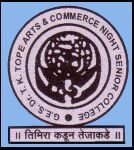Making of the Indian Constitution
अनुक्रमणिका
India before the EIC
India before the arrival of the East India Company in 1600 had a rich and diverse history.
- Ancient Civilizations: The Indus Valley Civilization (around 2500 BCE) was one of the world’s oldest urban cultures. It was followed by the Vedic period, where the roots of Hinduism were laid.
- Classical Empires: The Maurya (322-185 BCE) and Gupta (320-550 CE) Empires are considered India’s Golden Age, marked by political stability, economic prosperity, and cultural and scientific advancements.
- Mediaeval Period: Various dynasties ruled different parts of India, such as the Cholas, Pandyas, and Pallavas in the South, and the Rajputs in the North. Islamic invasions began in the 8th century, leading to the establishment of the Delhi Sultanate in 1206.
- Mughal Empire: Founded in 1526, the Mughal Empire played a vital role in shaping the subcontinent. Under Akbar, it became one of the most powerful empires, known for architectural marvels, art, and a syncretic culture.
- Regional Kingdoms: Various regional powers also rose, such as the Marathas in the West, the Sikhs in the Punjab, and the Ahoms in the East.
- Socio-Economic Aspects: India was known for its textile industry, agriculture, trade routes, and spice trade. It was a significant part of the global economic system, with strong trade connections with Europe, Africa, and Southeast Asia.
- Cultural and Religious Developments: Indian culture was marked by philosophical schools, literature in Sanskrit and regional languages, art forms like classical dance and music. Religions such as Buddhism and Jainism emerged alongside Hinduism.
- European Contacts before the EIC: The Portuguese explorer Vasco da Gama arrived in 1498, marking the first European sea connection. The Portuguese established trading posts and controlled Goa.
- Challenges: Despite the richness and diversity, there were challenges such as continuous invasions, internal warfare, social hierarchies, and economic disparities.
India before the East India Company was a mosaic of kingdoms, cultures, religions, and languages. Its rich heritage, economic prosperity, and cultural plurality made it an attractive destination for traders and invaders alike. The complex interplay between various cultures and the synthesis of different traditions is what shaped the unique and diverse character of the subcontinent.
India’s trade relations
Trade relations in India before the East India Company can be broken down into different periods and regions, revealing a vibrant history of commerce and exchange:
Ancient Period
- Indus Valley Civilization: Harappan cities like Lothal were trading hubs, and there’s evidence of trade with Mesopotamia.
- With the Roman Empire: Trade with the Roman Empire, especially through the port of Muziris on the southwestern coast, was prosperous. Goods like spices, ivory, and textiles were exported, and gold coins were imported.
- Silk Road Connections: India was a part of the Silk Road network, connecting it with China and Central Asia. Spices, precious stones, and textiles were traded.
Medieval Period
- Islamic World: With the rise of Islam, trade with the Islamic world flourished. Cities like Delhi and Calicut became major trade centers.
- South-East Asia: Indian merchants traded with kingdoms in present-day Thailand, Indonesia, and Cambodia, spreading Indian culture and influence.
- Spice Trade: The spice trade was dominated by Indian and Arab merchants. Black pepper, cardamom, and other spices were highly sought after.
- Maritime Trade Routes: Ports like Calicut, Cochin, and Cambay were connected to maritime trade routes that stretched to the Middle East and East Africa.
Mughal Period
- Mughal Commerce: Under the Mughal Empire, internal trade grew significantly. Roads and caravanserais were built to facilitate trade.
- European Contacts: The Portuguese, Dutch, and British began establishing trading posts in India. The Portuguese controlled the spice trade for a while.
- Exports and Imports: India exported textiles, spices, precious stones, and metals. It imported gold, silver, horses, and luxury goods.
Regional Trade Relations
- South India: The Cholas had extensive trade relations with China, Southeast Asia, and the Middle East.
- East India: The ports of Bengal had flourishing trade relations with Southeast Asia.
- Western India: The coastal areas engaged in maritime trade with the Middle East and East Africa.
India’s location between the Middle East and Southeast Asia made it a significant hub in global trade networks. Its diverse products, such as spices, textiles (especially fine muslins and calico), and precious metals, were highly sought after.
These trade relations also led to cultural exchanges and the spread of religious and philosophical ideas. The interconnectedness of the global economy and the role that India played in it were key factors in attracting European powers, like the East India Company, to establish their foothold.
The Company Raj
The East India Company (EIC) had a significant impact on India since the 18th century. Here’s a detailed look at their contributions and influence:
- Trade Monopoly: Established in 1600, the EIC’s influence grew in the 18th century as it gained a monopoly on the trade between India and Britain. It controlled the trading of vital goods like spices, cotton, tea, and opium.
- Colonial Expansion: Through strategic alliances and battles (such as the Battle of Plassey in 1757), the EIC expanded control over large parts of India. They replaced local rulers and imposed British law and administration.
- Economic Impact: The EIC’s control led to a reorganisation of the Indian economy to suit British interests. Traditional industries were affected, and India became a market for British goods. The revenue collection system changed, impacting land ownership and agricultural practices.
- Socio-Cultural Influence: The EIC brought Western education and legal systems. English became the medium of instruction, leading to a new class of English-educated Indians. Social reforms were also initiated, like the banning of practices such as Sati.
- Military Reorganisation: The EIC established a significant military presence and reorganised the Indian army, which was later used for various colonial pursuits in Asia and Africa.
- Indian Railways and Infrastructure: Although primarily for commercial interests, the EIC laid down the foundations of the Indian Railways and other infrastructural developments.
- Revolts and Resistance: The policies and practices of the EIC led to widespread discontent, culminating in the Revolt of 1857. This significant uprising marked a turning point in Indian history.
- End of the East India Company: The Revolt of 1857 led to the British Crown taking control over India, ending the rule of the EIC. The Government of India Act 1858 marked this formal shift in power.
- Legacy: The EIC’s impact on India’s economic, social, and political landscape was profound and is still felt today. It laid the foundations of the modern administrative system, legal framework, and economic structure, but it also caused significant disruption to traditional systems and led to widespread exploitation.
The history of the EIC in India is a complex interplay of commerce, power, cultural exchange, and colonisation. It shaped modern India in many ways but also led to a period of subjugation and economic exploitation that had lasting consequences.
References
Book review
The Shortest History of India
From the ruins of ancient civilisations to an emerging global superpower
One of the oldest civilisations and the largest democracy in the world, India is an amalgam of customs, races, castes, languages and spiritual beliefs, woven together over 5,000 years of wonderfully colossal and chaotic history.
From the earliest humans and the Harappan civilisation to Muslim conquerors, the Great Mughals, British rule, the country’s struggle for autonomy and present-day hopes and challenges, John Zubrzycki masterfully condenses five millennia of deities, mutinies, wars, great empires, decadent dynasties, invasions, migrations, colonisation and independence into a fascinating, lively telling. He brings the complex and contrasting layers of Indian history to life through a well-known cast of characters – Buddha, Alexander the Great, Akbar, Clive, Tipu Sultan, Lakshmi Bai, Curzon, Jinnah, Mahatma Gandhi – against a backdrop of the ever-present Ganges, the desert forts of Rajasthan, the snow-covered Himalayas and the ruins of India’s fabled civilisations.
From medicine to mathematics, philosophy to astronomy, literature to music, Buddhism to Bollywood, India has made its mark on Asia and the world. Its progress in tackling poverty and illiteracy have been impressive, but extraordinary challenges remain
https://www.amazon.in/dp/9390742609/
![]()


One Comment
Comments are closed.